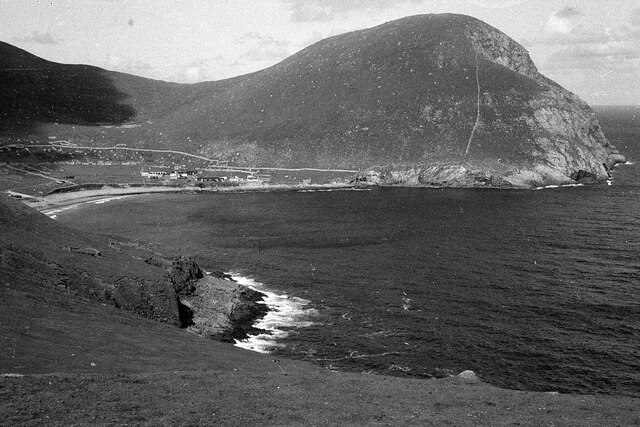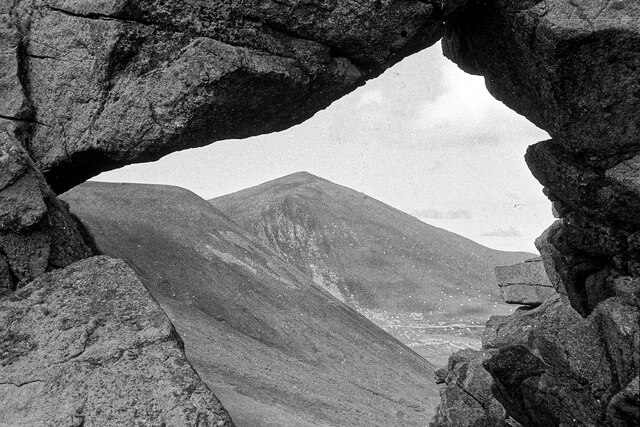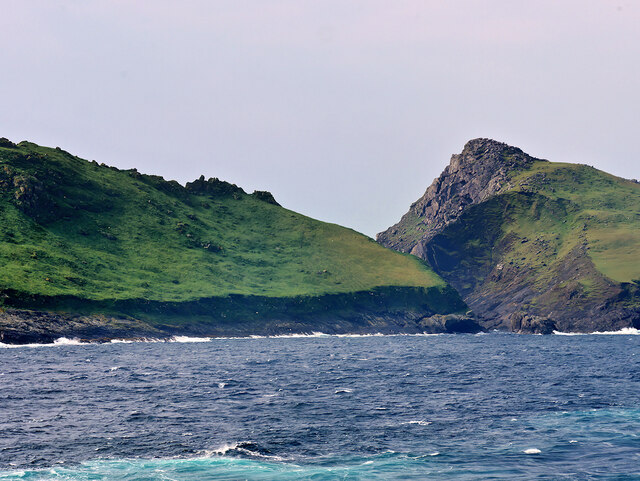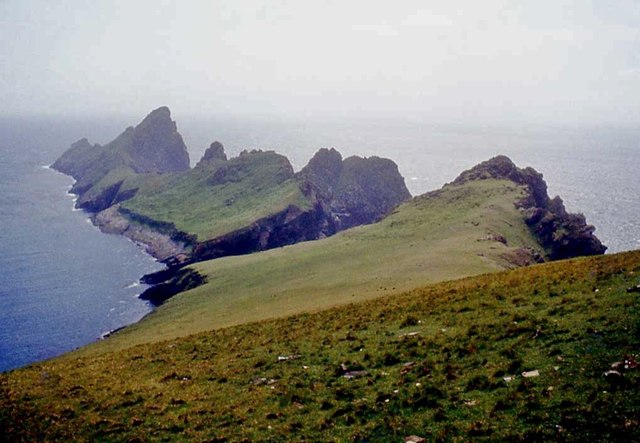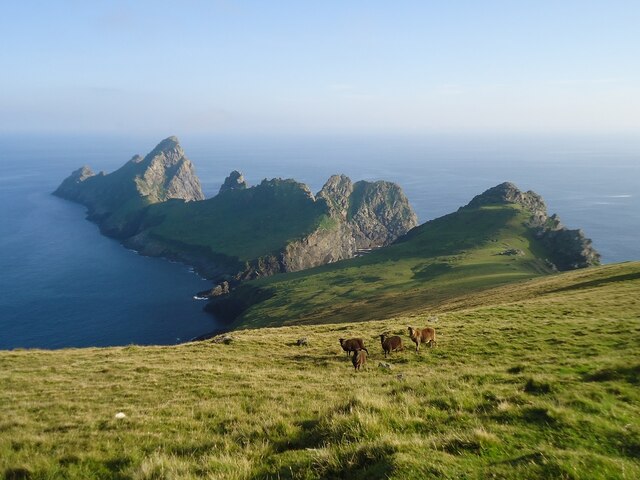Gob na Muce
Coastal Feature, Headland, Point in Inverness-shire
Scotland
Gob na Muce
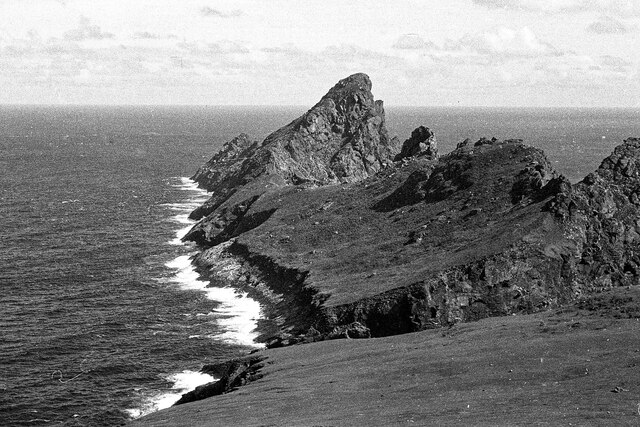
Gob na Muce is a prominent coastal feature located in Inverness-shire, Scotland. It is specifically categorized as a headland or point, protruding into the sea and offering breathtaking views of the surrounding landscape.
Situated on the west coast of Scotland, Gob na Muce is known for its rugged beauty and dramatic cliffs that rise majestically from the Atlantic Ocean. The headland is characterized by its steep slopes, which are covered in lush green vegetation, creating a stark contrast against the deep blue waters below.
Gob na Muce is a popular destination for nature enthusiasts, hikers, and photographers looking to explore the stunning Scottish coastline. The headland offers a variety of walking trails, allowing visitors to immerse themselves in the region's natural beauty. The paths wind through heather-covered moorland, offering panoramic views of the surrounding sea and nearby islands.
The area is also home to a diverse range of wildlife, including seabirds such as gannets, puffins, and guillemots. Visitors may also spot seals basking on the rocks or dolphins playing in the waves.
Gob na Muce is easily accessible by road, with a car park located nearby, providing a convenient starting point for those wishing to explore the headland. The site is well-maintained, and various viewpoints and picnic areas are available, allowing visitors to fully appreciate the stunning scenery.
In summary, Gob na Muce is a picturesque headland located in Inverness-shire, Scotland. With its impressive cliffs, breathtaking views, and abundant wildlife, it is a must-visit destination for nature lovers and outdoor enthusiasts.
If you have any feedback on the listing, please let us know in the comments section below.
Gob na Muce Images
Images are sourced within 2km of 57.793999/-8.5513966 or Grid Reference NF1097. Thanks to Geograph Open Source API. All images are credited.
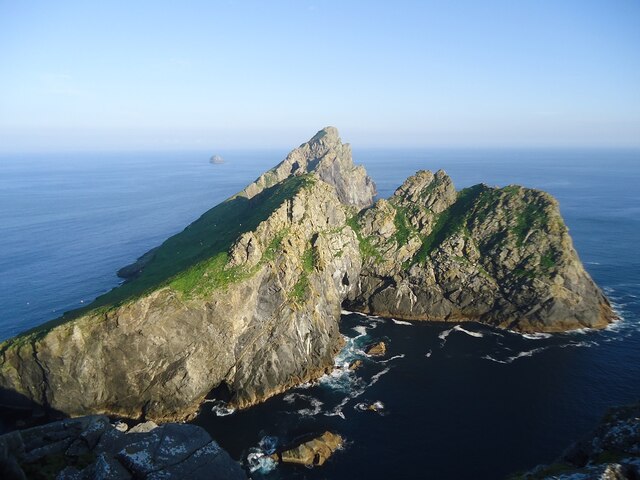
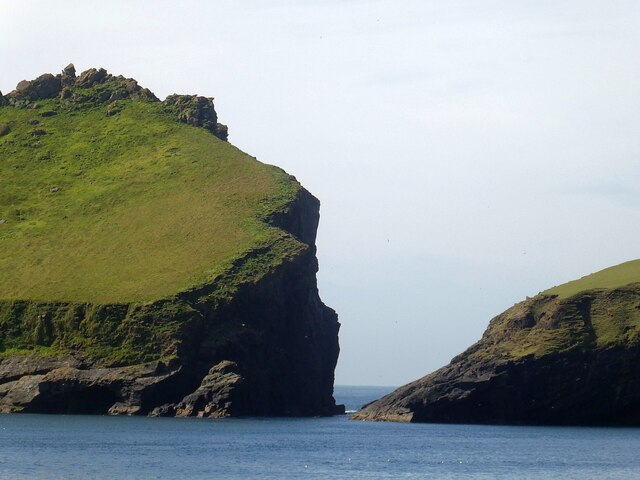
![Ruabhal, St Kilda Bagged on a circuit of six Hirta TUMPs on a sunny afternoon.
Name: Ruabhal
Hill number: 12797
Height: 130m / 427ft
Parent (Ma/M): 1636 Conachair
Section: 25: St Kilda
County/UA: Na h-Eileanan Siar [Western Isles] (UA)
Island: Hirta
Class: Tump (100-199m)
Grid ref: NF 09577 97873
Summit feature: rocky tor
Drop: 32m
Col: 98m NF095980](https://s0.geograph.org.uk/geophotos/04/18/10/4181056_d000fe76.jpg)

Gob na Muce is located at Grid Ref: NF1097 (Lat: 57.793999, Lng: -8.5513966)
Unitary Authority: Na h-Eileanan an Iar
Police Authority: Highlands and Islands
What 3 Words
///cookie.club.spokes. Near Balivanich, Na h-Eileanan Siar
Nearby Locations
Related Wikis
Dùn
Dùn is an island in St Kilda, Scotland. It is nearly 1 mile (1.6 kilometres) long. Its name simply means "fort" in Scottish Gaelic (for more information...
Stac Levenish
Stac Levenish or Stac Leibhinis (sometimes simply called Levenish/Leibhinis) is a sea stack in the St Kilda archipelago in Scotland. Lying 2.5 kilometres...
Hirta
Hirta (Scottish Gaelic: Hiort) is the largest island in the St Kilda archipelago, on the western edge of Scotland. The names Hiort (in Scottish Gaelic...
St Kilda, Scotland
St Kilda (Scottish Gaelic: Hiort) is an isolated archipelago situated 64 kilometres (40 mi) west-northwest of North Uist in the North Atlantic Ocean. It...
Have you been to Gob na Muce?
Leave your review of Gob na Muce below (or comments, questions and feedback).
